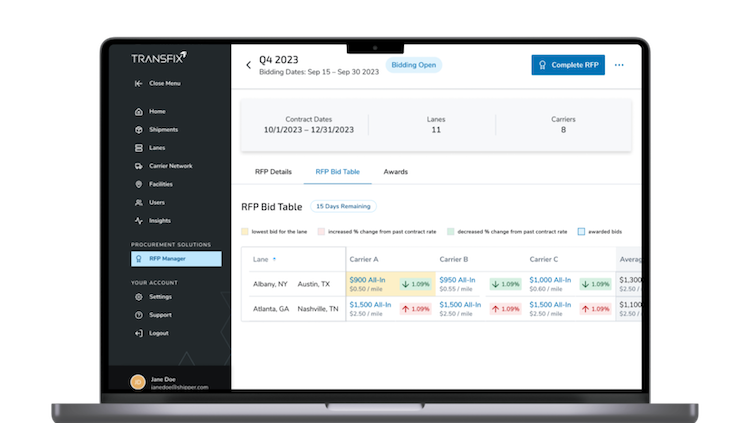Many small and mid-size shippers lack the ability to quickly recruit, properly vet, and onboard new carriers to accommodate fluctuating capacity needs. They also lack the organization-wide visibility and insight into freight operations to optimize rates and service — and keep up with enterprise competitors. A TMS addresses all of this.
A TMS streamlines tender management and secures capacity. It offers a bounty of benefits, including the ability to manage the entirety of your transportation operations in one single place, making freight tendering efficient and easy. A TMS integrates with your internal systems, reduces human error, and actually saves you money. It gives you a bird’s eye view of your entire supply chain in real-time.
Save time, reduce costs, and optimize carrier coverage. Still not convinced? Here are five more reasons you need a TMS now:
- Instant Quotes
Especially these days, when the spot market is so challenging, the ability to get instant quotes for immediate capacity needs will change your life. With one click, you can secure capacity from your network through an instant spot auction or direct booking. This makes dealing with rejected or time-sensitive loads a breeze, and it lets you select carriers based on the best rate and performance. - Based in the Cloud
A TMS is both secure and transparent, and your data belongs to you. Digitizing your routing guide is easier than you think, and you won’t be able to misplace your spreadsheets. Getting rid of pen and paper or Excel to track carriers and your tender management process should be an urgent priority once and for all. - Multi-modal Flexibility
True flexibility makes all the difference in moving your freight efficiently. When managing complex inventory, it’s important to have different capacity considerations to meet time, price, and speed requirements. With a solid TMS, you can access LTL and FTL rates. Dynamic capacity is a wonderful thing, and it will help you get your freight to where you need it, without it feeling like a game of Tetris. - Performance Analytics
With always-on visibility into how your carriers are servicing your freight and how much you’re spending, you can make informed, data-driven decisions. Built-in TMS analytics lets you track and monitor carrier performance and provide insights into spending, volume, and service levels. What’s more, a great TMS provider will review your analytics with you regularly, so you can use real data to tweak your processes at every turn. - Automated Tendering
A TMS lets you easily create and edit shipments and automate tenders online. Upload your preferred carriers and also consider others. You can save facility information for future shipments, automatically tender shipments to primary and backup carriers, and instantly book for immediate coverage.
As capacity continues to tighten, the ability to secure reliable coverage is increasingly important — and increasingly challenging. A TMS puts capacity, loads, real-time rates, and booking in an all-in-one platform. It’s time to put down your pen, ditch your Excel, and learn more about Transfix TMS.
[gravityform id=”32″ title=”false” description=”true”]




